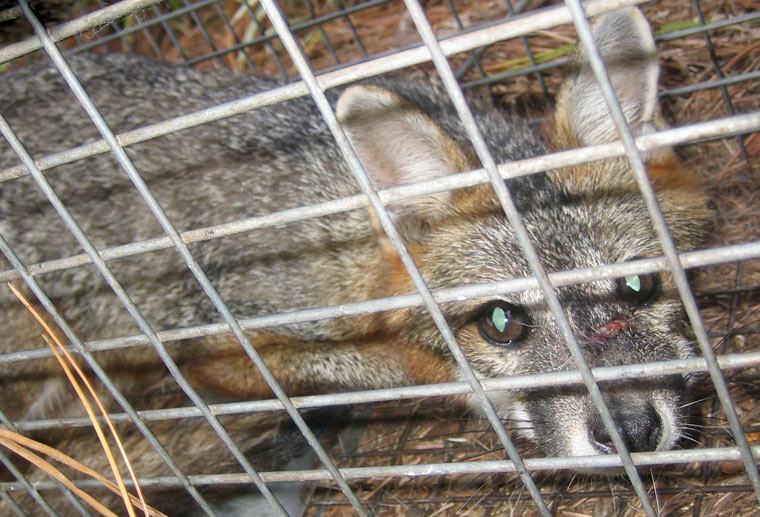-
info@aaanimalcontrol.com
Call us for help in your town
Humane Wildlife Education
Identifying fox tracks
Need wildlife removal in your hometown? We service over 500 USA locations! Click here to hire us in your town and check prices - updated for year 2020.
With the exception of Antartica, foxes are present on every continent across the globe, which is a pretty impressive feat and certainly can’t be said for many other animals. Often seen as cunning and sly, they have proven themselves to be clever, curious, and actually quite cute creatures, although still animals you most definitely wouldn’t want to get too close to. We know the Facebook videos make you think otherwise.

Their wide range of abilities make foxes the perfect nuisance or pest, and they are often noted causing a problem for homeowners and agriculturists alike. Chicken coops are destroyed, garbage cans are strewn across front lawns, and that’s just the tip of the iceberg. As well as being hungry, messy and destructive, foxes are also known carriers of a wide range of diseases, many of which will affect you just as much as they will affect your household pets.
Foxes will come onto your property for one of three things - food, water, or shelter. Garbage cans, for example, are a great source of food for these wild scavengers, and there’s plenty of water around in residential areas. Shelter comes in the form of spaces underneath porches and stairs, in outbuildings and garages, and sometimes even in the basement of crawl spaces of your home. If it’s dark, quiet, and safe from predators, it'll make the perfect home.
Foxes in the Garden
If you have foxes in the garden, you may start to notice a den being formed. In the wild, foxes would build dens in places such as farmlands, heavily forested areas, and also open meadows. Food, particularly that which has been left out by humans, is what lures these wild animals into our human spaces, and once they are in, life gets quite tough.
Foxes are very well known to very incredibly protective of nests and their youngsters, so if you have a nest somewhere on your land, you could be faced with an aggressive mother everyday. You might not even be aware of this, but all it takes is for you to take one step too close to her babies (whether you realize it or not), and she’ll turn tables and attack.
As well as being unsightly and potentially dangerous, dens and burrow created by foxes can be very expensive affairs, especially if they start to interfere with the structural safety of buildings. Large burrowing systems underneath buildings can wreak havoc, particularly when weather comes into play, such as heavy rain, flooding, or very hot or cold temperatures.
Droppings
Foxes leave their feces wherever they go, and they're known for making lots of it too. At first you'd be forgiven for blaming the poop in your garden on cats, as fox poop looks just like cat (or small to medium sized dog) poop. If you don't have a cat or dog, however, things will start to look a little weird. Could stray or neighborhood pets be defecating in your garden that often? Or do you have a house-pet that you don't want or know about yet?
Paw Prints
What doesn't help is that fox tracks often look very similar to cat and dog tracks too. Their toe pads are virtually identical, with a larger center pad, and four smaller pads surrounding it. You may spot claw marks in the paw prints too, which doesn't help again, because both cats and dogs have claws also. (Cats tend to leave no claw marks because theirs are retractable.)
Size-wise, fox tracks will be somewhere in the region of 0.5 cm long by 3.5 cm wide. Fox tracks are usually narrower than cat and dog tracks, and more diamond-shaped in their makeup too. You will also be able to tell the difference between paw prints or tracks left by a fox, and those left by a dog, because foxes prints are incredibly deliberate. It is as if every paw placed on the ground has been carefully thought out - in a direct line. Dogs have a very different way of doing things, running around erratically and, therefore, leaving erratic tracks in its wake.
Fox Smell
You’ll generally know if a fox has been hanging around because they have their own specific smell about them. Once you know it, you know it, and if you smell it, you’ll know something is different. It’s a very musky smell, and pungent too, and it’s caused by scent-marking. It's a way for the fox to mark its territory.
For more information, you may want to click on one of these guides that I wrote:
How To Guide: Who should I hire? - What questions to ask, to look for, who NOT to hire.
How To Guide: do it yourself! - Advice on saving money by doing wildlife removal yourself.
Guide: How much does wildlife removal cost? - Analysis of wildlife control prices.
animals in the attic
noises in the attic


















